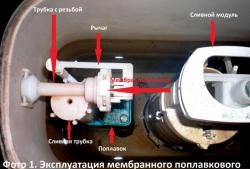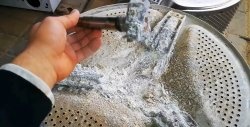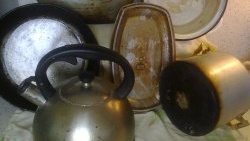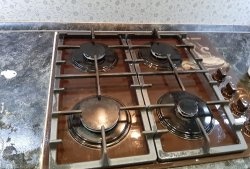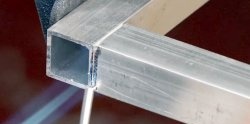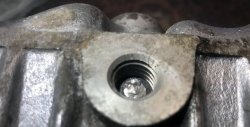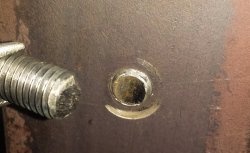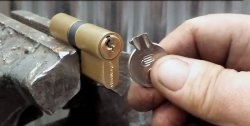How to easily remove solid deposits from the drain tank using any available method
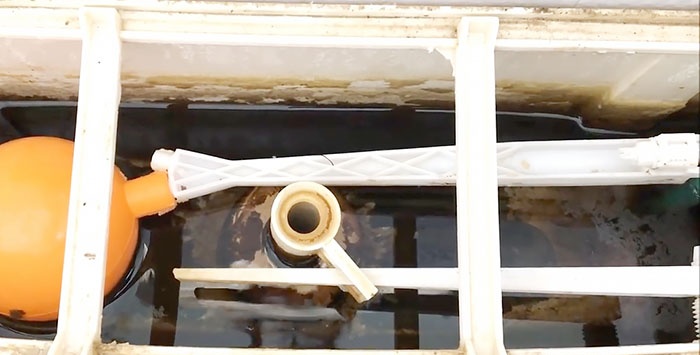
In many regions, the water does not meet the requirements for plumbing equipment - it is too hard. Over time, calcium salts harden and are deposited on the internal surfaces of the cistern, this not only spoils its appearance, but also impairs functionality. Deposits also appear on the sealed surfaces of the drain valve - leaks form. In urban areas, water consumption increases, and in rural areas, the sewage collection tank is additionally overfilled. The consequences in both cases are very unpleasant. Replacing the tank with a new one is troublesome and expensive, and it is very difficult to correct the problem using conventional methods. There is a simple and very effective method to remove deposits and completely restore the cistern to factory condition.
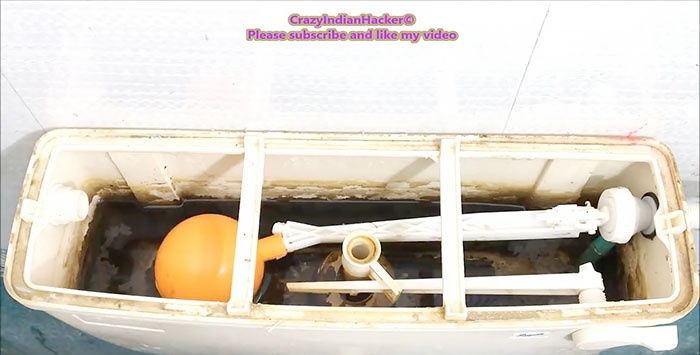
What to prepare
Before starting work you need to buy citric acid packet, a dishwashing sponge with an abrasive layer and soap or any liquid detergent.You will need a container for preparing the composition; use rubber gloves to protect your hands.
Cleaning technology
Pour approximately 3-4 liters of warm water into the container. You can first pour 2–2.5 liters of cold water and dilute it with hot water from the boiler. After dilution, the temperature should be approximately 50–60 degrees Celsius.
Add 150 gr. citric acid and stir thoroughly until completely dissolved.
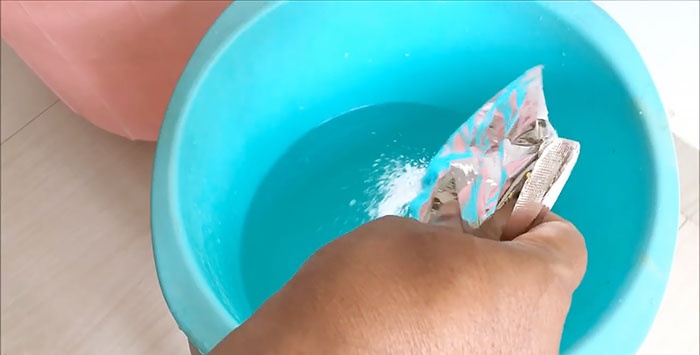
Pour the mixture into the tank, close it with a lid and leave for at least three hours.
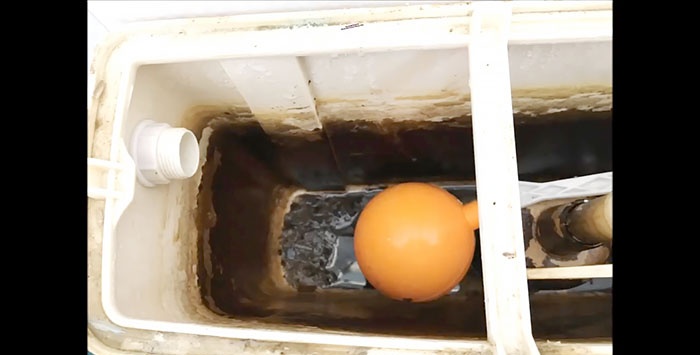
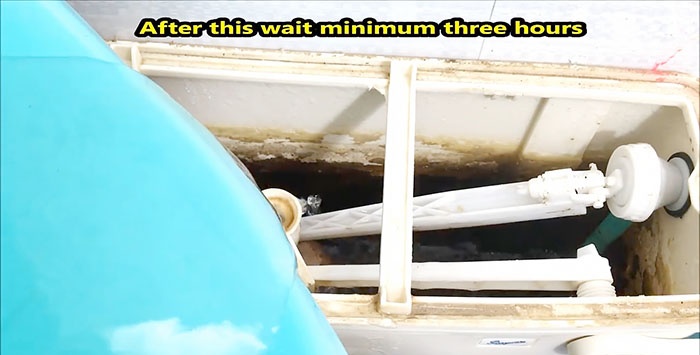
After this period, remove the lid and drain the water, be sure to turn off the water supply tap. Unscrew the valve drive lever retainer and remove it.
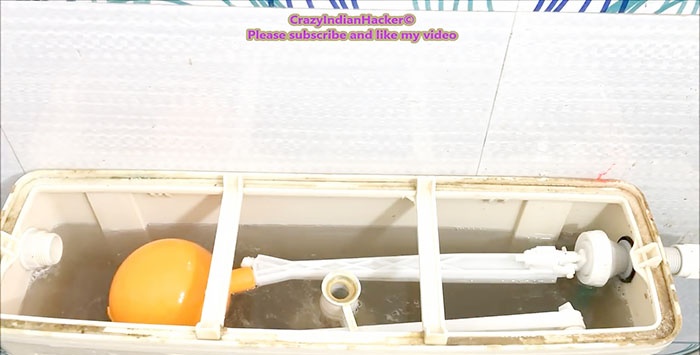
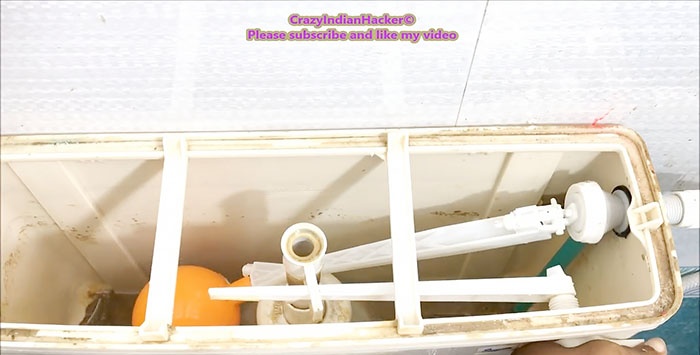
Remove the valve and float from the tank. Disassemble carefully, the parts and fasteners are plastic; over time they lose their plasticity and become brittle.
Remove sediment from the bottom. You will see that the method worked very effectively, the calcium not only softened, but also turned into fine sand.
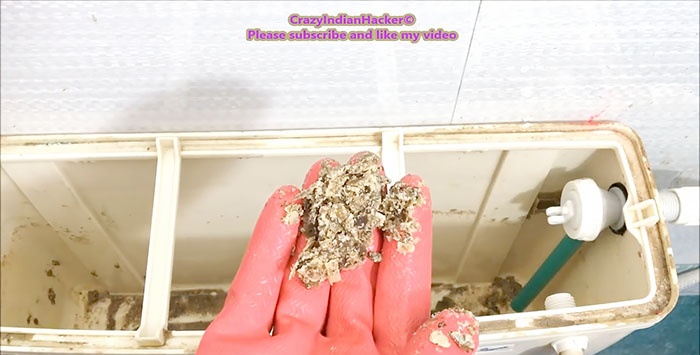
Using a sponge and soap, thoroughly clean all surfaces of the drain tank, remove rust deposits, calcium residues and dirt. Pay special attention to hard-to-reach places: technological grooves, round surfaces, etc. During cleaning, pour water into the tank several times to wash off dirt. Be sure to thoroughly clean the valve areas.
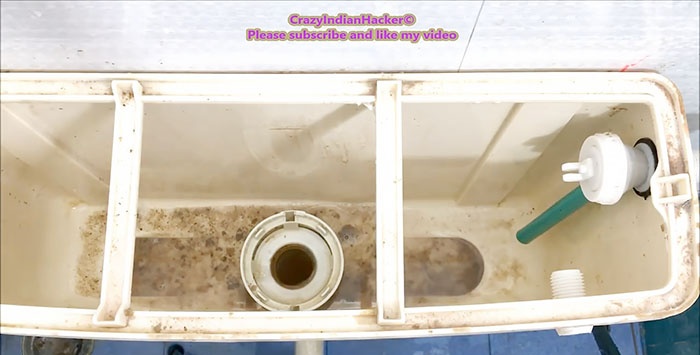
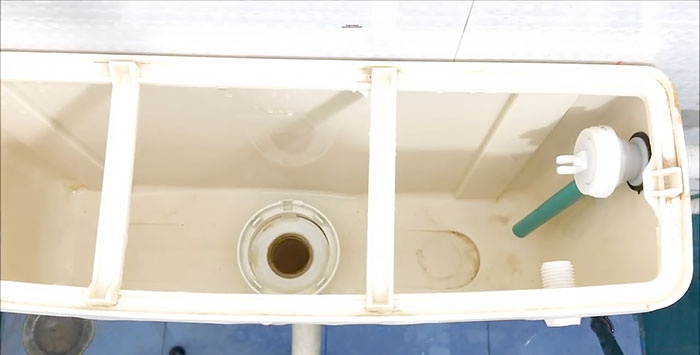
Reinstall all the parts of the tank: first, the drain valve, check that its position is correct. Do not damage the silicone gasket during operation.
Then fix the valve drive lever and adjust its position. Place the float and secure it with a pin. Turn on the water supply and check the functionality of the elements several times.
Everything is normal - close the tank with a lid and continue using the drainage system.
Conclusion
Citric acid perfectly corrodes solid deposits and does not have a negative effect on plastic, rubber and silicone parts. This allows it to be used to clean deposits on all plumbing fixtures. If the contamination is very old, you will have to increase the exposure time and replace the old solution with a new one several times. But the result will always meet expectations.
Watch the video
Similar master classes
Particularly interesting
Comments (0)

